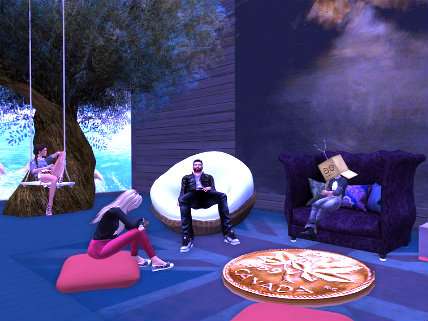Second Life Creators Have Not Stopped Believing
VR headsets could give new life to the Second Life concept-for better or worse.

I was in grad school during the time period when Second Life was going to change everything. Created by San Francisco-based Linden Lab, the massive online virtual world actually launched in 2003, but it wasn't until around 2006 that everyone collectively lost their minds over this shit. Harvard law professors started teaching classes in Second Life. Major companies like IBM, Coca-Cola, and Adidas spent millions setting up a Second Life presence and Reuters even launched a virtual bureau there. "It's as if the moon suddenly had oxygen," wrote Frank Rose for Wired in 2007. "Nobody wants to miss out."
But once they got there, nobody wanted to stay. A friend wrote her grad-school thesis on Second Life economies, making $2 in real money as a virtual furry stripper but ultimately coming away unimpressed. I never joined myself, but I used to watch her explore. The world of Second Life was paved with very, very empty roads.
Though millions of people created avatars, many came back infrequently, if at all. "The reality doesn't justify the excitement," wrote Rose, in a publication that had, not a year earlier, published a 12-page "travel guide" to Second Life. "Once you put in several hours flailing around learning how to function in Second Life, there isn't much to do," which "may explain why more than 85 percent of the avatars created have been abandoned." The only spots that really drew a crowd were the virtual sex clubs.
As of summer 2014, "estimates put the current active user-base around 600,000 members," wrote Laura E. Hall at The Atlantic. Far from its heyday, although "the sheer variety of environments, and the obvious care that people put into them, remains stunning."
But now Second Life, or at least something quite similar, could get another shot. Linden Lab is hoping that virtual-reality goggles of the Oculus Rift variety will give the concept whatever it was lacking. "Codenamed Project Sansar, it will begin testing with a handful of players in the coming days," Quartz reports.
The company hopes to have an alpha version available by the time Facebook-owned Oculus launches its consumer headset early next year, and to commercially release the game before the end of 2016.
Some of Sansar's rules will be slightly different, and the immersive VR graphics will be far superior (though it will still work on regular computers and mobile devices too). But like Second Life, Sansar isn't a game with a clear objective. There are no bosses to defeat or princesses to rescue. The goal is to reach not a million users, but "tens, if not hundreds, of millions." Instead, people, playing as virtual representations of themselves, will carry out day-to-day, often fantastical, lives in a made-up world. They'll explore, socialize, have cybersex, make art, perform, create businesses, build houses, go shopping, pay taxes.
In other words… Linden Lab learned nothing from the great Second Life fiasco. But maybe we all did? It will be interesting to see if colleges, corporations, and others take the bait again.




Show Comments (52)